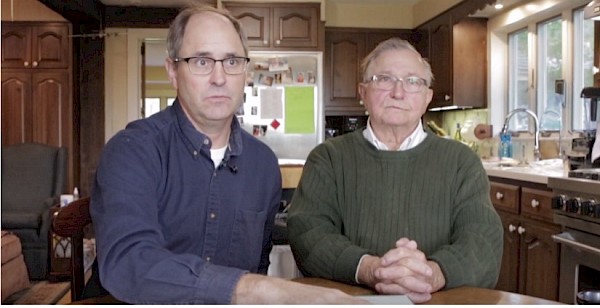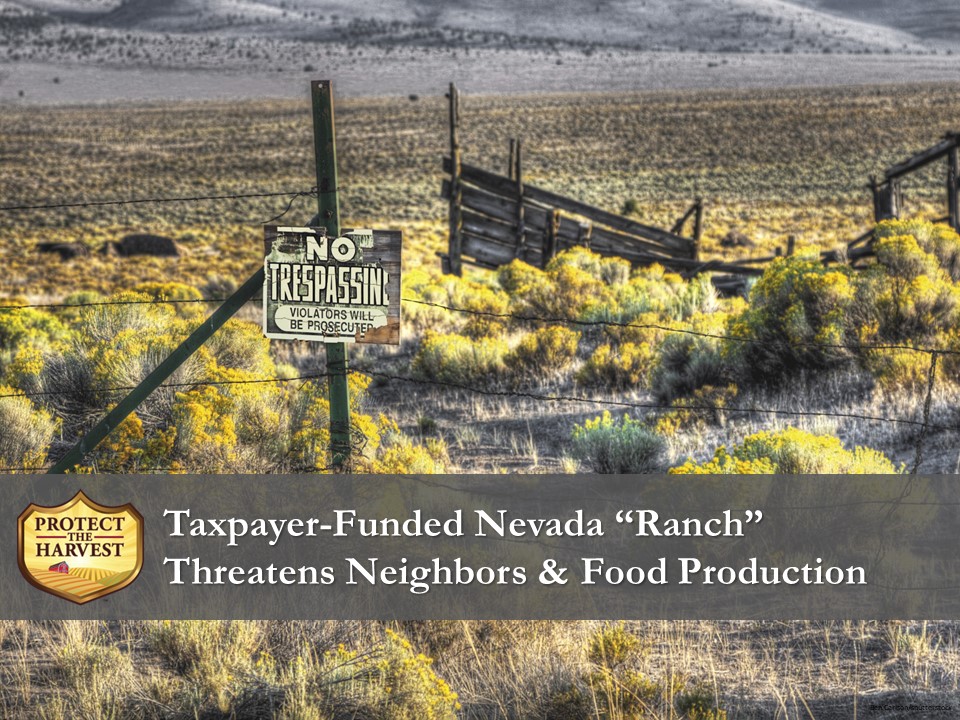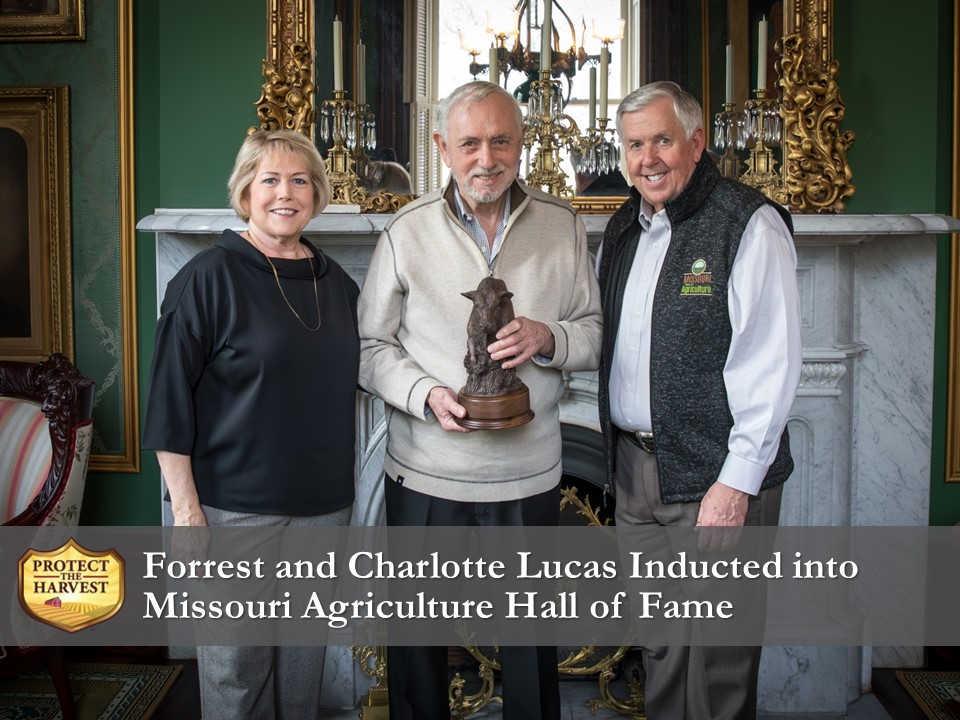Protect The Harvest Advisory Committee member Gary Baise was interviewed in this article and shared his personal and professional insights.
By CHRIS BENNETT Farm Journal Inc, Ag Web August 30, 2021
When the federal government placed a regulatory bull’s-eye on 2.2 acres of Nick Smith’s farmland, the tiny designation stretched into a blanket covering all 2,200 acres of his land. Farmer, veteran, and former congressman, Smith was pulled into a bureaucratic rabbit hole in 2008 and lost all farm program dollars—but emerged 10 years later to tell the tale.
According to a federal court ruling, the National Resources Conservation Service (NRCS) forced Smith to navigate a “bureaucratic labyrinth” and “demonstrated a disregard for its own regulations.” Piling on irony, Smith’s 2.2 acres had been farmed and drained since the 1960s, with a full tile system paid for and approved by USDA.
“I want every corn and soybean farmer to know this could happen to them, because these kinds of cases are still going on right now, but you never hear from the farmers involved because they’re too scared or get swallowed by the costs or the bureaucracy,” says Smith. “I wish my story was unique, but it’s not by any means.”
The Swampbuster
In 1838, Smith’s great-great-great grandfather bought land in the picturesque, rolling topography of present-day Hillsdale County, outside Addison, Mich., and built a clapboard house to satisfy the needs of his bride—who deigned a log cabin—and set to clearing the land acre by acre, backed by the muscle of mule power and the steel teeth of logging saws.
Almost 100 years after his forefathers established a foothold in the variable soils of southern Michigan just 30 miles north of the Ohio border, Smith was born in 1934, and became the fourth generation to farm the family ground, bookended by service in the Air Force from 1959-1961, and a 12-year U.S. congressional tenure from 1993-2005 as a member of the House of Representatives from Michigan’s 7th District, including a stint on the Agriculture Committee.
Within Smith’s stretch of Hillsdale County farmland sits a particular 48-acre field in the shape of a bowl, surrounded by low hills. Almost dead-center in the field, surface water drops to a low spot, claimed by NRCS to be 2.2 acres. In 1961, Smith signed an agreement with the Soil and Conservation Service (precursor to NRCS), and the agency approved a drainage tile system—installed cost-share in 1964, with half the expense paid by USDA. The field went into crops (wheat, corn, and alfalfa), but by the early 1980s, the aging tile was failing, resulting in consistent moisture collection in the middle of the acreage. During the 1980s and 1990s, Smith tried on multiple occasions to repair the tile—no dice. (See here for case details and chronology.)
Significantly, as the tile began to fail, Congress passed Swampbuster regulations in 1985, essentially denying farm program benefits to any producer that turned a wetland to farmland. Agriculture production on converted wetlands suddenly carried a heavy penalty, except in grandfathered cases requiring a three-point checklist: the conversion took place prior to Dec. 23, 1985; the ground produced at least one ag commodity prior to Dec. 23; and the ground did not support woody vegetation on Dec. 23.
By 2008, Smith had bought an Extendahoe, intent on repairing the wet spot, and informed USDA (AD-1026 form) of his plan, and on Jan. 28, 2009, NRCS gave Smith clearance to plant the field in spring, provided he removed no trees. On the following day, Jan. 29, Smith received oral permission from an NRCS district conservationist to cut down trees, provided stumps were left in place.
Come spring, according to Smith, he worked the ground and planted—the standard activity of a farmer. Yet, according to NRCS, Smith was a Swampbuster who converted a 2.2-acre wetland, and by implication, an environmental rogue. As a result, he was legally blacklisted: Within months, the Farm Service Agency brought down the ax, making Smith “indefinitely ineligible for $42,528 in annual USDA benefits.”
It was a dumpster fire impasse, set to burn all the hotter. “I’m no liar,” Smith says. “I thought reason would prevail. I thought the facts would be what mattered, but it turns out they didn’t care about any of that. NRCS didn’t care if it was 100 acres, 2 acres, or a square foot—all they cared about were the regulations. Procedure, not truth, is what runs a bureaucracy.”
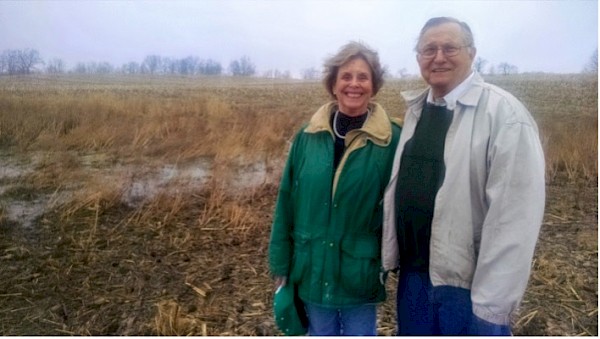
“Even today, it’s hard to talk about how much I felt betrayed and how frustrated I felt,” Nick Smith says, pictured alongside his wife, Bonnie, adjacent to the disputed acreage. (Photo courtesy of Brad Smith)
Regarding the Smith case, NRCS declined all Farm Journal questions, instead issuing the following statement: “… A recent GAO report on ensuring compliance with the wetland conservation provisions identified that most wetland reviews do not find that farmers are in violation and in cases when there is a violation, often a good faith waiver is applied. Where a producer may not be in compliance, NRCS works with the producer to facilitate a successful resolution.”
However, Smith finds no relevance in the NRCS statement. “Even today, it’s hard to talk about how much I felt betrayed and how frustrated I felt,” he says. “This was not just my land, but land that belonged to my father and grandfathers before me. I’ve had commendations for conservation, and I’ve even got 120 acres set up for wildlife with no hunting just because I like to contribute—none of that mattered because they claimed I broke their rules.”
Bureaucratic Battle
Decades prior to Smith’s Swampbuster litigation, his mother, Blanche, turned a defunct freezer into a secure storage unit in the basement of the family home, wrapping tax filings and business records in asbestos sheeting (fire-resistant) before slipping the bundles into the makeshift vault. Digging in the freezer, Smith found the original 1963 Soil and Conservation Water Plan used by USDA to draw up tiling plans on 660 of his acres, including the contested 2.2 acres. “USDA designed the tile line and supervised the draining of the exact wetland they were blaming me for,” Smith exclaims. “It breaks 20 years later and I’m not supposed to fix it because I haven’t met all the regulations? They didn’t care what paperwork I could produce and it was like finding out common sense had died.”
The strands of Smith’s legal knot progressively tightened up the USDA chain. Mediation, myriad documents, technical jargon, and appeals—Smith was mired in a bureaucratic battle well beyond his expertise and training, and admittedly, he could not shake the stress. “I suppose I would have fought NRCS forever, to the financial detriment of my farm, and family, and health. I couldn’t live with being portrayed as a cheater, but I still can’t describe the frustration of knowing the truth was irrelevant. Maybe it’s a terrible feeling that only a farmer knows. One thing for sure, I couldn’t fight on my own, and I’d have never gotten anywhere without my son.”
Indeed. Enter Brad Smith in 2009.
“Nothing To Do With Farming”
In 2021, Brad, 60, holds the reins of the Smith family farming operation, with 1,300 acres under row crop cultivation outside Addison. He keeps one foot planted in farmland and the other in a nearby law office, Endurance Law Group, 30 minutes north in Jackson: Patent law keeps him sharp and farming keeps him humble.
However, in 2009, Brad was in Ann Arbor as a partner at major law firm. As he saw his father go into mediation with NRCS, Brad watched the machinations of a legal battle overwhelm Nick Smith, who was increasingly despondent. “Dad was facing technical jargon he didn’t understand, and he was losing sleep and in turmoil. Family land is a precious possession and when someone starts telling you that you can’t act within the law on your own ground, your reaction is almost primal. Dad was taken to low, low points.”
“It’s an all-costs assault by a bureaucratic machine, and they know American taxpayers and regular citizens will never even know about what has gone on,” says Brad Smith. “That’s how almost 100% of these NRCS cases end and disappear.” (Michigan Farm Bureau)
The basic details of the case were subsumed beneath a deluge of dictums and technicalities, contends Brad. “This was hyperregulation and I was shocked by NRCS’ intransigence at every turn. Once a case reaches a legal stage, NRCS doesn’t back down, and mediation becomes pointless because they’re backed by endless money and attorneys who refuse to lose. It’s an all-costs assault by a bureaucratic machine, and they know American taxpayers and regular citizens will never even know about what has gone on. That’s how almost 100% of these NRCS cases end and disappear.”
In 2013, Brad launched a lawsuit against NRCS (Maple Drive Farms Limited Partnership, Nicholas Smith v. Tom Vilsack, Secretary, United State Department of Agriculture), but was consistently denied out of the gate, and turned to mitigation—giving up acreage elsewhere on the farm. Translated: He wanted to settle, make certain the rest of the family land was grandfathered, and tightly button up the entire episode.
Instead, he says NRCS produced a map of the Smith family property, denoting more potential wetlands acreage several miles away from the original wetlands designation—including one spot beneath a pivot. Incensed, Brad pulled the handbrake on negotiations. “I was through with all settlement talks,” he says. “It was unbelievable because NRCS was telling us they were coming after us for even more land. Dad and I both agreed: We weren’t just fighting for us, but we wanted to help other farmers down the road by making sure USDA followed the laws actually passed by Congress.”
“The last thing we wanted to do was keep going with more money and time,” Brad explains, “but once you get away from the local NRCS or county committee, you come up against bureaucrats that seem to have no farming connections—these are not people that grew up around farms or even know how to drive a tractor. Their job is to win, win, win appeals, and it has nothing to do with farming.
Groundhog Day
On April 1, 2015, roughly seven years after Nick and Brad Smith began their regulatory battle, the United States Court of Appeals for the Sixth Circuit cut into the legal layer cake of Nicholas Smith v. USDA, and delivered a scathing review of NRCS actions: “This complicated case only involves a 2.24-acre parcel of land. But Smith contends, and we have no reason to doubt, that this case has ramifications for thousands of corn and soybean farmers. In January 2009, USDA signed a mediation agreement with Smith, permitting him to plant the parcel in the spring and cut down trees so long as Smith did not remove stumps. USDA has never argued that Smith intentionally violated this agreement. Nonetheless, USDA has permanently deprived Smith of program benefits and forced him to navigate a bureaucratic labyrinth. All the while, USDA has demonstrated a disregard for its own regulations and insisted that Smith mitigate his land when the relief he seeks is not based on regulations requiring mitigation.”
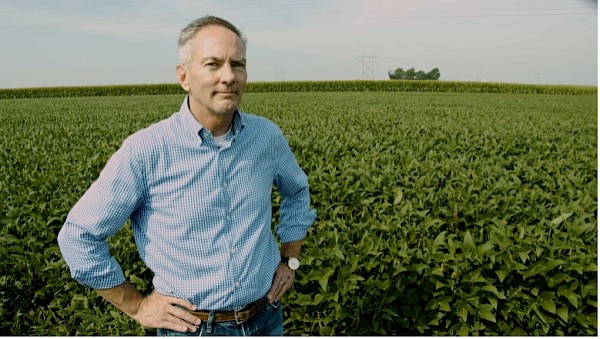
“Why the government pursues these wetland claims on small pieces of farms that have been fully tiled and farmed for decades is incomprehensible to me,” Kurt Wilke says. (Illinois Farm Bureau)
However, the Smith case was far from over: Despite the rebuke by the Sixth Circuit, NRCS went back to drawing board, restarting the pursuit of wetlands regulations on the Smith farm. “NRCS didn’t blink,” Brad says. “Anywhere else, in any organization that you just got told you behaved arbitrarily and capriciously, you would have a sense of shame or embarrassment, but they didn’t care.”
NRCS can lose in court, reach into a bag of “do-overs” and reset the entire process, notes Kurt Wilke. From 2012-2016, Wilke endured bureaucratic groundhog day in an extended, surreal chain of court battles, when he and his father-in-law, Carl Hoffee, now deceased, defeated NRCS four times in a wetlands dispute over the same piece of central Illinois farmland. Essentially, NRCS took four bites of the apple to regulate 22 acres of Wilke’s ground in Macon County.
“This story is as depressing as mine was,” Wilke describes. “They (Nick and Brad Smith) faced the very same agency mindset that NRCS can just start over again anytime they lose their case. That makes the process totally one-sided, and a nearly impossible burden for the farmer, whether they are a lawyer or not.”
“NRCS continues to take the position that the administrative judge has no authority to actually rule on the merits of the case, i.e., whether or not the land in question is a wetland, but only to determine whether the agency erred,” Wilke adds. “If the judge finds the agency erred, then NRCS takes the position it can do things over without making that error. But the farmer gets no do-overs. This is a glaring deficiency in the process.”
After two more years of wrangling after the Sixth Circuit’s decision, and Brad preparing to deliver an extensive brief narrating the entire affair, NRCS finally folded—agreeing to reclassify the 2.2 acres as a wetland conversion having only “minimal effect,” and allowing the Smith operation to qualify for USDA payment programs.
As of 2021, the 2.2 acres is home to rows of soybeans, but Brad is adamant: A legal victory by a farmer countering NRCS regulations is an extreme rarity. “If I wasn’t an attorney and knew how things work in the court system, our case, like almost all other farmer-NRCS cases, would have disappeared and nobody would ever have known about it. In my state alone, every year, farmers have no choice but to give in to NRCS. Farmers know these cases are going down the bureaucratic hole right now.”
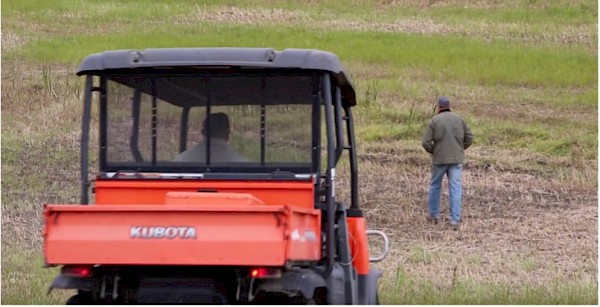
“Anyone who says these NRCS wetlands cases aren’t still happening is in denial or ignorant of the facts,” says Brad Smith, pictured on foot in proximity of the disputed acreage. (Michigan Farm Bureau)
The necessity of USDA program payments has positioned U.S. agriculture producers in an inescapable vise and afforded unprecedented regulatory power to the federal government, Nick contends. “American farmers are dependent on the government to survive, and I wish that wasn’t so, but it is the plain truth. We’ve watched USDA restrictions grow tighter and tighter, and more decisions taken away from farmers, and handed decision power to unelected agency employees in Washington, D.C., who have never set foot on a farm—all because we can’t farm without program payments.”
“No normal farmer can get around NRCS dictates, even if the farmer is 100 percent right,” Nick continues. “What matters to bureaucratic, unelected federal employees that have unlimited funds and time is power.”
Hood and Wilke
Right or wrong, farmers engaged in government agency regulation battles face an inescapable Catch-22: Go it alone and drown in complicated legal waters or hire an attorney and pony up for crippling financial costs. “I put in over 1,000 hours on this case. Dad would be looking at $300,000 in legal bills if I couldn’t help him, and that’s if he could find a lawyer knowledgeable in this area,” Brad says.
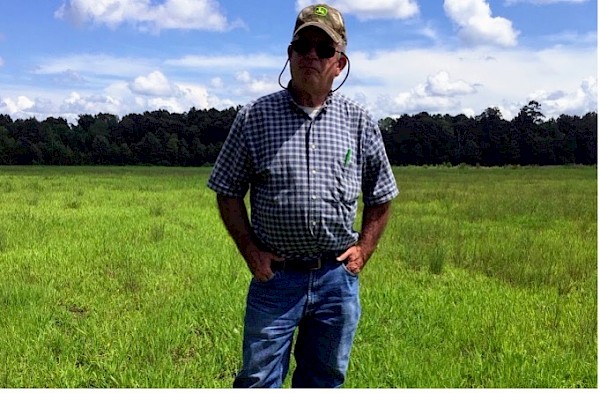
In 2016, NRCS claimed Charles Hood was in violation of Swampbuster regulations. Two years later, Hood prevailed in court when the presiding judge dismissed NRCS’ claims. (Photo courtesy of Charles Hood)
“Impossible,” exclaims Gary Baise, an attorney with Olsson Frank Weeda. “It’s impossible for a farmer to contest a wetlands determination without a lawyer because there are so many rules. The Smith case is not about environmental concern or water quality. Don’t kid yourself about 2 measly acres—that’s about control by government.”
Baise, who carries 40-plus years of experience dealing with agricultural and environmental issues, represented producer Charles Hood during a convoluted, 30-acre wetlands case in southeast Virginia’s Southampton County. In 2005, Hood purchased former timberland, sought USDA’s approval to improve the acreage, and briefed NRCS officials on scores of occasions across a decade of land improvements. In 2016, NRCS came knocking and claimed he was in violation of Swampbuster regulations. Two years later, Hood prevailed in court when the presiding judge dismissed NRCS’ claims.
“NRCS attorneys know they’re not going to be called out over anything,” Baise says, “unless legal guys walk in the room like myself, or Brad Smith, or a guy like Kurt Wilke in Illinois.”
As an attorney-grower, Wilke echoes Baise’s perspective: “I do agree these cases cannot be fought without a lawyer, because not only are the wetlands rules themselves complex, the appeal process is essentially an evidentiary trial, followed by the submission of briefs that must cite to prior cases and rulings to be effective.”
“Why the government pursues these wetland claims on small pieces of farms that have been fully tiled and farmed for decades is incomprehensible to me,” Wilke continues.
How many agriculture operations end up in conflict with NRCS each year, in breach of regulations? “That’s a question that doesn’t get asked too often,” Baise says. “The answer isn’t very comforting for farmers.”
“Our Blood”
“Approximately 6,000 wetlands-related investigations are carried out each year, and about 600 are pursued by NRCS,” Baise says.
Finding information on particular wetlands cases can be extremely difficult and time-consuming, Wilke describes. “I am sure there are other cases like ours and the Smiths out there…The appeals division keeps all of its cases on a database that can be accessed, but you have to be aware of that and aware of how to search that database for a particular wetlands issue. Then, if you do manage to find a prior case that is on point, the appeals division has redacted all the names and identifying information so that you would have no way of contacting the farmer involved in that prior case.”
For the past five years, Brad Smith has consistently received four to six phone calls per year from farmers in multiple states seeking advice after dealing with NRCS wetlands determinations on small acreage. “Anyone who says these NRCS wetlands cases aren’t still happening is in denial or ignorant of the facts,” he says. “These are very powerful stories from farmers so consumed by the stress that they can’t function. Bureaucrats don’t realize that a legal dispute is no abstract concept to us—it’s personal, our life, our family, our land, our history, our blood.”
Hyper-regulation
On Aug. 28, 2020, new Swampbuster rules were published in the Federal Register, intended to clarify the wetlands identification process. Definitions of particular terms were added; and revised definitions of wetlands determination were also added for farmed wetland, farmed wetland pasture and prior-converted cropland.
The new clarifications and definitions are an improvement, Baise says, but only by degree. “There is some hope out there now, but not much. Without an attorney, there is just no way for a farmer to keep track of all the rules. And the great irony is that the rules are supposed to be there to help the farmer, but no one, and I mean no one, believes the rules are applied that way.”

“I couldn’t live with being portrayed as a cheater, but I still can’t describe the frustration of knowing the truth was irrelevant,” Nick Smith says. “Maybe it’s a terrible feeling that only a farmer knows.” (Michigan Farm Bureau)
A partial solution to wetlands issues, despite new definitions and clarifications, is dependence on the local level, insists Nick. “If I was still in Congress, I’d push for more influence for local county committees and state executive committees, and reduce anything going to the next level. Once you leave the local level, NRCS won’t give an inch, and your case won’t have any relation to basic reason.”
Despite a decade spent in a tug-of-war with the federal government, Brad is adamant: He would do it again. “I would fight this again for my land and my father, but I’d also do it for other farmers if they are prepared for a long fight and can afford it. Our country has many good people at USDA helping farmers, but when you see situations like ours and many others, you know there is something seriously wrong. There has always been a bureaucracy, but farmers have never seen anything like the hyper-regulation of today.”

